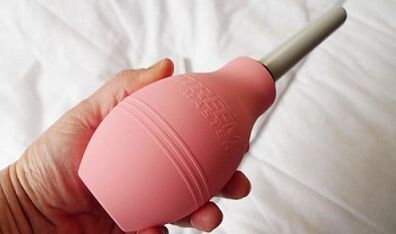
There are more than 400 known species of worms that can parasitize animals and humans.The infestations they cause are usually named after the type of helminth.
The most common parasitoses include: ascariasis, enterobiasis, opisthorchiasis, hookworm, cysticercosis, teniarinchiasis, echinococcosis, strongyloidiasis, trichuriasis, taeniasis, hymenolepiasis, diphyllobothriasis, trichinosis.Most often, helminths are localized in the intestines, but they can also colonize other organs and tissues - liver, muscles, lungs, eyes, brain and others.
Symptoms of parasites in the human intestine
The intestine is the preferred location for parasites.Symptoms of parasites, especially in the early stages and/or with low infection intensity, may be mild or completely absent.And the most pronounced ones are often confused with manifestations of other diseases.
Worms often cause chronic diseases of the digestive system, which can occur even without helminth infestation.These are enterocolitis, pancreatitis, gastritis, cholecystitis.Helminthiases often lead to serious complications that lead to death.
The main symptoms of intestinal helminthiasis:
- Flatulence, constipation, diarrhea.These gastrointestinal disorders arise from the release of metabolic products by helminths and physical effects on the digestive tract.They are often chronic and occur over several years.
- Pain in muscles and joints.They are caused primarily by the migration of adults and larvae from one tissue and organ to another.These are injured, become inflamed and react with immune reactions, causing pain.
- Allergic reactions.Allergies can manifest themselves in different ways – eczema, a rash similar to hives, the appearance of papillomas and acne.Their cause is irritation and damage to the intestinal walls caused by helminths, as well as the penetration of small particles of the abdominal contents into the blood through damaged vessels.
- Occasionally strong feeling of hunger.Caused by a lack of nutrients due to their absorption by helminths and a drop in blood sugar levels.
- Weight fluctuations in one direction or the other.Weight loss can be caused by nutrient deficiencies and digestive disorders.Obesity is caused by a constant feeling of hunger and frequent large meals.
- Neuroses and mental disorders.They are explained by poisoning of the body with waste products of the helminth.Neurotic and psychological disorders manifest themselves through feelings of restlessness and anxiety, depression and constant irritability.
- Grinding of teeth in sleep.It is a very characteristic sign of the presence of helminths in the body.
- Decreased immunity.It is manifested by dysbacteriosis, frequent colds and the appearance of tumors, including malignant ones.
Important!Pay attention to your appearance.

A person infected with helminths for a long period of time may not be aware of the invasion.However, if you are careful, the signs can be noticed even at low severity.With helminthiasis, the appearance inevitably changes due to a dysfunction of the entire organism.
In particular:
- the skin becomes rough;
- nails peeling;
- Acne, freckles and age spots appear;
- Seborrhea occurs.
The appearance of all these signs suggests that helminths have already caused significant damage to the gastrointestinal tract and impaired the functionality of the entire body.
Intestinal worm infections cause symptoms similar to many serious illnesses – pneumonia, pancreatitis, acute appendicitis.Symptoms characteristic of viral infections such as tonsillitis, sinusitis, tonsillitis, sinusitis and polyps in the nasal cavity appear.
Most parasitoses cause mild or moderate psychological disorders.A constant state of stress and irritation leads to anxiety, restlessness and depression.Patients suffer from constant fatigue, sleep poorly and grind their teeth while sleeping.
The most serious manifestations of helminthiases include immune disorders, often leading to respiratory diseases and malignant neoplasms.All this clearly shows the progression of the disease.
What else happens to the body due to helminthiasis?
Symptoms of parasites in the small intestine occur in response to subsequent worm activity.
Helminths secrete antienzymes - substances that prevent their digestion.This leads to indigestion and, as a result, reduced nutrient absorption, diarrhea and anemia.Fatty acids are poorly absorbed, especially in intestinal helminthiasis.

The small intestine is traditionally the home of worms, particularly ubiquitous parasites such as pinworms and roundworms.
The first settle in the lower part of the small intestine and then colonize the large intestine.
Important.Adult roundworms can block the airways and cause suffocation.They can also block the small intestine, bile ducts, and gallbladder.This leads to constipation, obstructive jaundice, severe pain in the hypochondrium and vomiting with the appearance of worms in the exfoliated masses.
With ascariasis, the penetration of worms into the liver, bile ducts and abdominal cavity can lead to abscesses.This is an extremely serious, life-threatening complication with the possibility of perforation into the abdominal cavity with the development of peritonitis.
Cleaning with baking soda
People are always interested in the possibility of getting rid of diseases at home using folk remedies.This is convenient because any treatment procedure can be carried out with maximum comfort, without wasting time visiting the clinic.
One of the most popular folk remedies for combating helminths is baking soda.It turned out that sodium bicarbonate, in addition to the laxative and cleansing effect, is also harmful to helminths.Experimental doctors developed their own recipes for using soda to treat various diseases, including helminthiasis.
Just a note.Baking soda is an alkali.Healthy blood is alkaline.Over the years, the human body becomes acidic, which leads to many diseases, including cancer.
When symptoms of parasites appear, cleaning with soda helps to quickly combat helminths.Especially those that are at least temporarily located in the large intestine.Cleaning parasites with a soda solution allows you to remove adult worms and their larvae.This removes about 70% of the toxins and waste products secreted by helminths.
The antihelminthic effectiveness of lemonade increases when the entire gastrointestinal tract - from top to bottom - comes into contact with it.It is clear that the upper and middle sections of the gastrointestinal tract can be treated with soda only orally, that is, by drinking a soda solution.The lower zones can be influenced by an enema.
Pinworms, roundworms, tapeworms, Siberian leech, eel, fasciolopsis, tapeworm and some other parasites react acutely to soda therapy.
Soda enemas
The event takes place in 3 stages.
1st stage.Preparing for soda enemas
This procedure is carried out with a normal water-salt enema.The purpose of the procedure is to cleanse the body and ensure full access of the soda solution to the intestinal walls and parasites.
Take 1…2 liters (depending on the patient's body type) of boiled water.It contains 1…2 tbsp.l.table salt.It is needed to prevent the absorption of the enema solution through the intestinal walls.
It is most convenient to introduce water using an Esmarch cup.The tip should be lubricated with vegetable oil or petroleum jelly.It is recommended to leave the water inside for 5 to 10 minutes.It is recommended to “breathe with your stomach.”If you don't know what it is, you can talk to those who do yoga or breathing exercises.“Belly breathing” allows you to massage the organs and ensure that the solution penetrates into all bends.After draining, proceed to the second stage.
2nd stage.Soda enema
Add 1 second to 0.8...1 liters of boiled, cooled water.l.Add soda, stir and heat the solution to a temperature of 38...40°C.Then they give an enema.The soda solution should be kept in it for about 30 minutes.Then go to the toilet.
Attention.Mild abdominal pain may occur at this stage.This is not dangerous and indicates that helminths resist removal from the intestine and try to linger on the intestinal walls.
3rd stage.Second cleansing enema
It is done exactly like the first time.To increase efficiency, you can add a little lemon juice along with salt.
All three cleaning steps must be repeated 8 to 10 times a day.The following cleaning procedures can be carried out the next day or with a break in the day.

A few notes on soda cleaning:
- The water should be neither cold nor hot.For cleansing enemas (levels 1 and 3) it should be between 20 and 25 °C, for soda enemas (level 2) between 38 and 40 °C.
- To avoid discomfort or pain, water should be introduced gradually.
Cleaning with soda is not recommended in the following cases:
- If a person follows a salt-free diet.Since lemonade removes salts from the body, it can cause a severe deficiency, which is undesirable.
- If you have an individual intolerance to lemonade.
- If you take calcium supplements or foods rich in calcium.In this case, you must temporarily stop taking calcium.
- With low acidity of gastric juice.When lemonade is taken orally, the acidity decreases even further, which negatively affects the digestion of food.Ulcers may even appear.
If negative reactions of the body to soda occur, you need to reduce the concentration of the solution or stop cleaning for a while.Perhaps the procedure will be more successful another time.
If cleaning with baking soda does not bring results, you should consult your doctor so that he can prescribe an alternative treatment.
The localization of helminths in the intestine is usually easier to treat compared to some others, for example in the liver or brain.There may even be cases of self-healing.However, you need to know that some intestinal worm infections cause very dangerous complications that are life-threatening.
Therefore, you cannot rely only on the strength of your body.If you have symptoms that indicate the presence of helminths in the body, you should immediately contact a parasitologist.Only he can say whether there is cause for concern or whether nothing dangerous has happened.








































